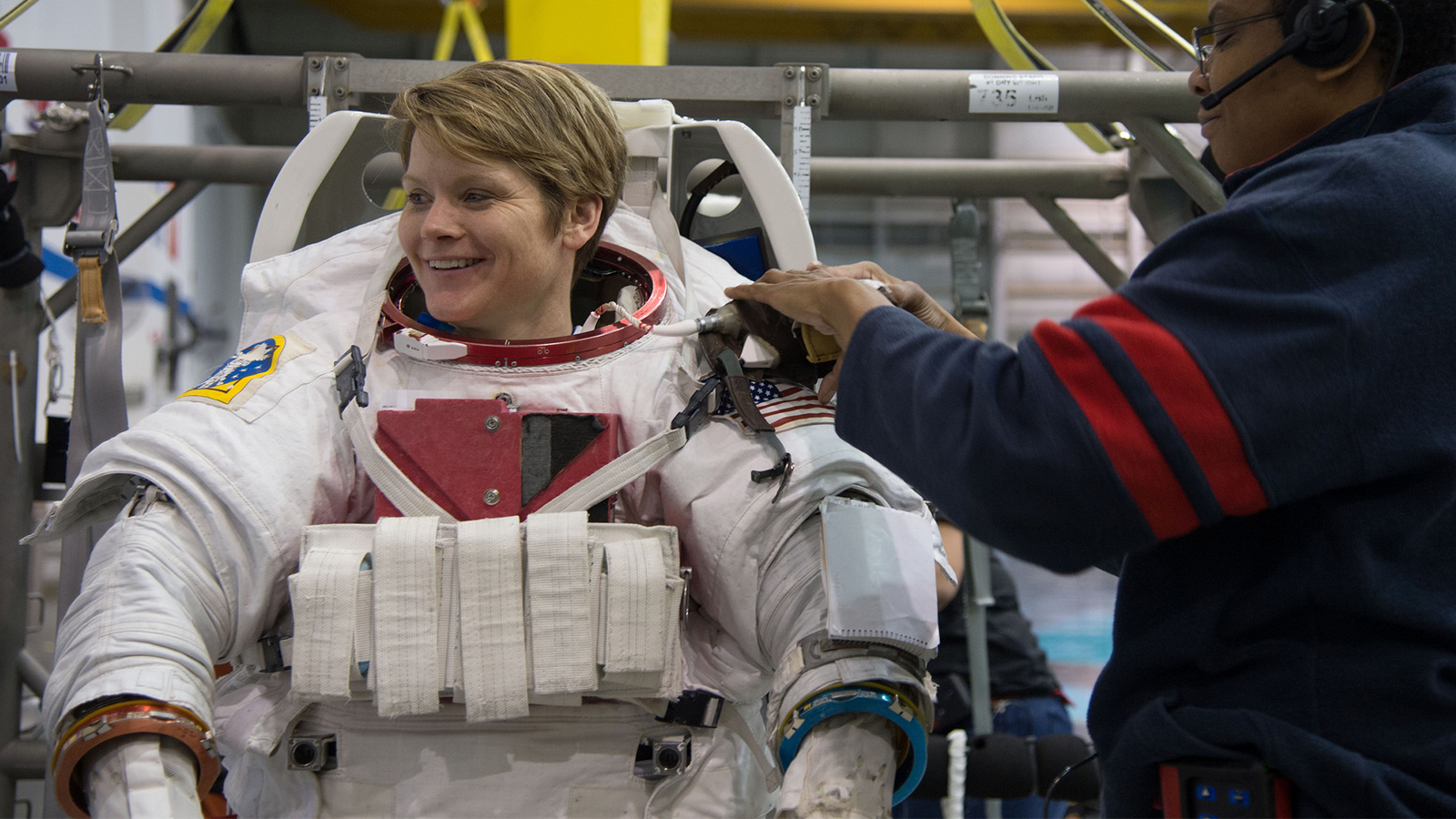Stay Up to Date
Submit your email address to receive the latest industry and Aerospace America news.
Crew will include NASA astronaut Anne McClain
Russia plans to launch an American astronaut, a Canadian astronaut and a cosmonaut to the space station on Dec. 3, about two months after an aborted launch sent a Soyuz capsule plunging to the Kazakhstan desert in an accident that miraculously left neither occupant seriously injured.
Roscosmos officials announced the decision today in a Moscow press conference that they followed with the release of a one-page statement.
The crew of three on the station now will return to Earth on Dec. 20, Roscosmos said.
NASA, as it does for every Soyuz launch with astronauts, will conduct a flight readiness review, said spokesman Rob Navias of the Johnson Space Center in Texas.
The crew scheduled to launch on Dec. 3 will consist of cosmonaut Oleg Kononenko, Canadian astronaut David Saint-Jacques and NASA astronaut Anne McClain, pictured above. NASA and Russia have not said when the crew members who survived the Oct. 11 accident, NASA astronaut Nick Hague and Russian cosmonaut Alexey Ovchinin, will fly again.
“No decision has been made on where they would fit in to the schedule yet,” NASA’s Navias said.
The day after the accident, Roscosmos Director General Dmitry Rogozin tweeted a photo of himself with his arms around Hague and Ovchinin, saying in Russian “we plan their flight in the spring of next year,” according to the Twitter translation feature.
As for the Oct. 11 accident, Russian investigators said in the statement today that “Roscosmos has arranged a development of preventive measures to avoid any such contingences in the future.” They said that a “separation contact sensor” rod on one of the boosters was bent during assembly at the launch site, the Baikonur Cosmodrome in Kazakhstan. This prevented a reverse thrust nozzle cap from opening on the booster when it separated. This “abnormal separation” led the booster to hit the core stage rocket “in the fuel tank area” instead of flying clear of the rocket, resulting in the tank’s decompression. They said that as a consequence, the “rocket lost its attitude control.”
Russia released a video taken by a camera on the side of the rocket.
NASA engineers were not on site at Baikonur to conduct the investigation with Roscosmos but NASA officials in Moscow were “actively involved in discussions with them about their review of data about what the most probable cause was,” said Navias.
About Tom Risen
As our staff reporter from 2017-2018, Tom covered breaking news and wrote features. He has reported for U.S. News & World Report, Slate and Atlantic Media.
Related Posts
Stay Up to Date
Submit your email address to receive the latest industry and Aerospace America news.




